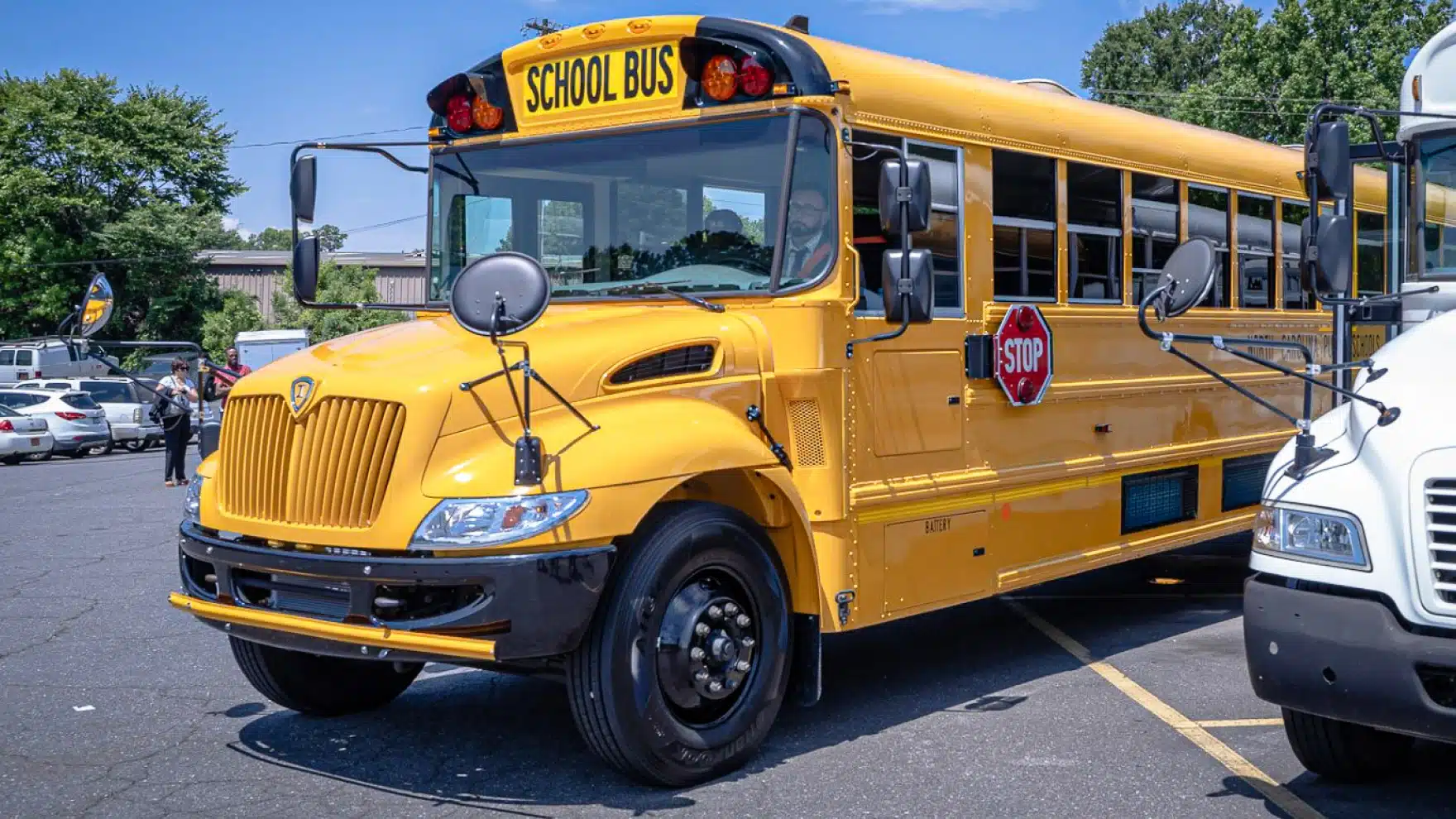SACE's Electric Transportation Director shares insights into timely electric vehicle (EV) topics on LinkedIn. Check out what's captured his attention recently and join the conversation.
Stan Cross | July 1, 2024 | Clean Transportation, Electric Vehicles, North CarolinaAs we roll into summer, climate change is at the top of our minds. The nation has just experienced another record heat wave, with temperatures soaring as high as 25 degrees above average, with approximately 270 million Americans sharing above-90-degree highs across the country. Summer heat waves have become so severe and persistent that the National Weather Service has created HeatRisk, a website to identify localities where people’s health could be at risk from expected heat in the seven-day forecast.
Electric cars, trucks, and buses are cool – not just because of their innovative technology, smooth ride, and lower operating costs, but because they reduce transportation climate pollution by 78% compared to gas vehicles based on the nation’s mix of electricity generation resources. In states with more clean energy, the reduction is even more significant, and as more clean energy replaces dirty fossil fuels nationwide, driving an EV will keep getting cleaner.

As a result, EVs offer a tangible and immediate solution to the transportation sector’s growing contribution to the climate crisis. That’s why in this installment of “3 Hot Topics,” I’m sharing my personal experience road tripping in my EV, observations about how the expanding used EV market is increasing consumer EV ownership opportunities, and thoughts about the public health benefits of my favorite EV, the electric school bus.
I hope you enjoy and welcome your engagement on these and all EV topics. Join the EV conversation on LinkedIn.
Road Trips: Why Range Matters For Off-The-Beaten-Path Adventures
Summer means road trips. My wife and I recently loaded two kayaks on top of our long-range Tesla Model Y before heading out for 120 miles through an EV charging desert with significant elevation change. Over the trip, we lost about 20% range, which is on par with what I lost in mpg when I hauled these same boats on my old gas-burning Subaru. We left home at 100% state of charge and ended at 41%. (Without the boats, I’d expect I’d return with a little over 60% from the same drive). This is why range matters for those who adventure off the beaten path hauling large gear. For my daily driving needs, a 150-mile range would be perfect. For road trips between cities, a 250-mile range would be enough. But a 300+ mile range is necessary to access wilderness hiking or camping, haul boats on top, or tow bikes behind. I’m grateful to keep doing what I love in a long-range EV! Read more.

Buying Used: The Used EV Market is Growing
Until recently, affordability has been the highest hurdle the EV market has struggled to clear. But thanks to manufacturing efficiency, falling battery costs, competition, and tax rebates, EV sticker prices are within striking distance of gasoline cars. Also increasing their affordability is the growing used EV market. As more new EVs are purchased and leased by consumers and fleets, the number of available and affordable used vehicles also increases. This is especially important as nearly 70% of consumers buy their cars used. I myself bought my second Nissan Leaf online from Carvana in 2018, which gave me access to their national pool of used EVs. Used EV sales hit an all-time high for Carvana in Q1 2024, contributing 4.3% of its total sales. Read more.

Get On The Bus: 200+ Electric School Buses Coming to North Carolina
I was happy to recently be interviewed by Charlotte’s WFAE to talk about the latest round of electric school buses coming to my home state of North Carolina. The federal Clean School Bus Program is helping schools cover the cost of electric buses and charging infrastructure, funding the purchase of over 200 electric school buses in the Tar Heel State. Combined with clean energy tax credits, these grants and rebates are making EVs price-competitive with their diesel counterparts. Because electric school buses produce zero tailpipe emissions, they protect students, drivers, and communities from harmful air pollutants that can lead to asthma, cancer, and other heart and lung illnesses. Research shows reducing exposure to diesel emissions can even improve student test scores! Read more.

Want to join the EV conversation? Let’s connect on LinkedIn!
SACE’s Electrify the South program leverages research, advocacy, and outreach to accelerate the equitable transition to electric transportation across the Southeast. Visit ElectrifytheSouth.org to learn more and connect with us.